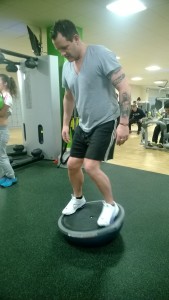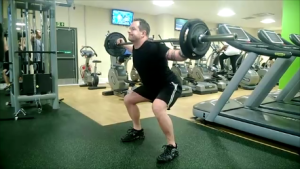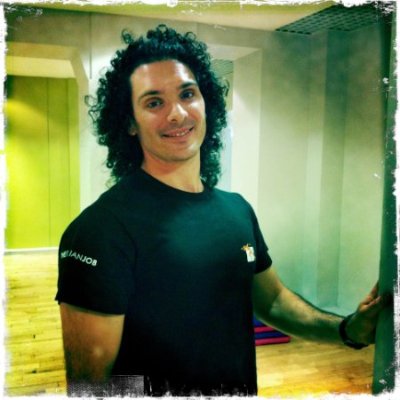The BLOG-Rehab: Femur titanium rod rehabilitation
Physical rehabilitation is a therapeutic program designed to assist people who have suffered an accident, traumas or injuries.
It is a step-by-step process toward recovery. The main goal of the program is to give the patient physical independence in order to carry on with his/her daily life activities. The other goal is to address and reduce the physical limitations and compensation mechanisms caused by the accident, traumas or injuries.
I work in a gym near Covent Garden which is close to many theatres. I have been treating people here who have suffered accidents/injuries of various types, such as car accidents, bike accidents as well as injuries sustained during gym or dance training.
I am an osteopath, sport massage therapist and a personal trainer of some years and I combine different skills in my approach towards rehabilitation.
A few people have been asking me what makes a rehabilitation program successful.
In my opinion the following factors are crucial for a successful rehab program:
1 – Knowledge of the patient.
2 – Knowledge of their past trauma history.
3 – Knowledge about their injury.
The list is not exhaustive so anyone is welcome to add other factors that may be important as well.
By “knowledge of the patient” the therapist should be able to ascertain what type of person their patient is, what is the most appropriate approach for them and what motivates them. Are they male or female, young or adult, fit or unfit, etc… It is not a good idea to use the same rehab program on different patients, even if it is the same injury.
By “knowledge of their past trauma history” the therapist should obtain the relevant information from the patient in order to build up a tailored/appropriate rehab program. The case history should not pivot only on the injury/trauma itself, but it should take into account the physical background of the patient: fitness level, professional/regular athlete vs. casual athlete or not, passionate gym goer or sedentary person.
 By “knowledge about their injury” the practitioner must do research or refresh their understanding about the type of injury sustained by the patient, its implication and the dynamics of the trauma occurred. For instance, injuries in the shoulder joint are complex, labelling shoulder immobility as frozen shoulder is too simplistic, potentially leading an incorrect diagnosis and the incorrect rehabilitation protocol used.
By “knowledge about their injury” the practitioner must do research or refresh their understanding about the type of injury sustained by the patient, its implication and the dynamics of the trauma occurred. For instance, injuries in the shoulder joint are complex, labelling shoulder immobility as frozen shoulder is too simplistic, potentially leading an incorrect diagnosis and the incorrect rehabilitation protocol used.
In this post I report a rehabilitation program for a patient who suffered a car accident with subsequent surgery procedure in right femur and knee joint.
The patient presented with a history of a traffic accident which resulted in a titanium rod implanted in his right femur. Titanium screws were applied in his right knee and later taken out. The patient also presented with a missing portion of his right vastus medialis muscle which is quite visible from the pictures below:
Six months after the femur surgery, hospital rehabilitation and the all clear given by the surgeons this patient sought me out for further rehabilitation. I devised a specific rehab program in order to regain strength to the muscles of the right quadriceps complex as well as improve range of motion in the right hip/knee articulation complex.
A thorough case history report and musculoskeletal assessment were performed in order to gain thorough knowledge of the patient, type of injury and to choose the correct rehabilitation protocol.
The approach was “multidisciplinary”, using different techniques – namely exercises, soft and deep tissue massage techniques, stretching, proprioceptive exercises and functional training.
OPEN CHAIN AND CLOSED CHAIN EXERCISES.
 First of all I used two types of exercises; an “open chain” leg extension and “closed chain” static lunges. The open chain leg extension one gave me an idea of the strength acquired so far by quadriceps muscles, the closed chain leg extension gave me an idea of the strength and range of motion of the coupling hip/knee joint movement.
First of all I used two types of exercises; an “open chain” leg extension and “closed chain” static lunges. The open chain leg extension one gave me an idea of the strength acquired so far by quadriceps muscles, the closed chain leg extension gave me an idea of the strength and range of motion of the coupling hip/knee joint movement.
The test was performed first on the uninjured leg, then on the injured leg and finally on both legs. After the test I was able to pick the appropriate weight, sets and number of repetitions for the exercises.
Static lunges gave me an idea of how much muscle loss there was on the right thigh, especially at the area close to the knee joint.
Following the strength program, the protocol involved deep tissue and soft tissue release treatment in order to “break down” scar tissue around the joint and along the muscles of the thigh. The treatment gave good results as the patient was able to deliver more muscular power in a wider range of motion afterwards. Stretching was also applied to “lengthen” those muscles and surrounding tissues which have not been used for a long time.
The first part of the rehab protocol focused on decreasing perceived pain and muscle stiffness in right thigh as well as regain strength and range of motion. Once the results were satisfactory a proprioceptive (balance) assessment was performed in order to detect imbalance between muscles when performing movements.
Proprioceptive training involved movements on different directions to check muscle balance and “readiness to fire muscle” on right thigh muscles. Any loss of balance during movements was registered as muscle imbalance.
 A dynamic proprioceptive training was also implemented in order to further test muscles balance and improve it.
A dynamic proprioceptive training was also implemented in order to further test muscles balance and improve it.
At the end of the rehab protocol the patient was able to perform squat exercises in safety and controlled manner.

